Restorative Dentistry
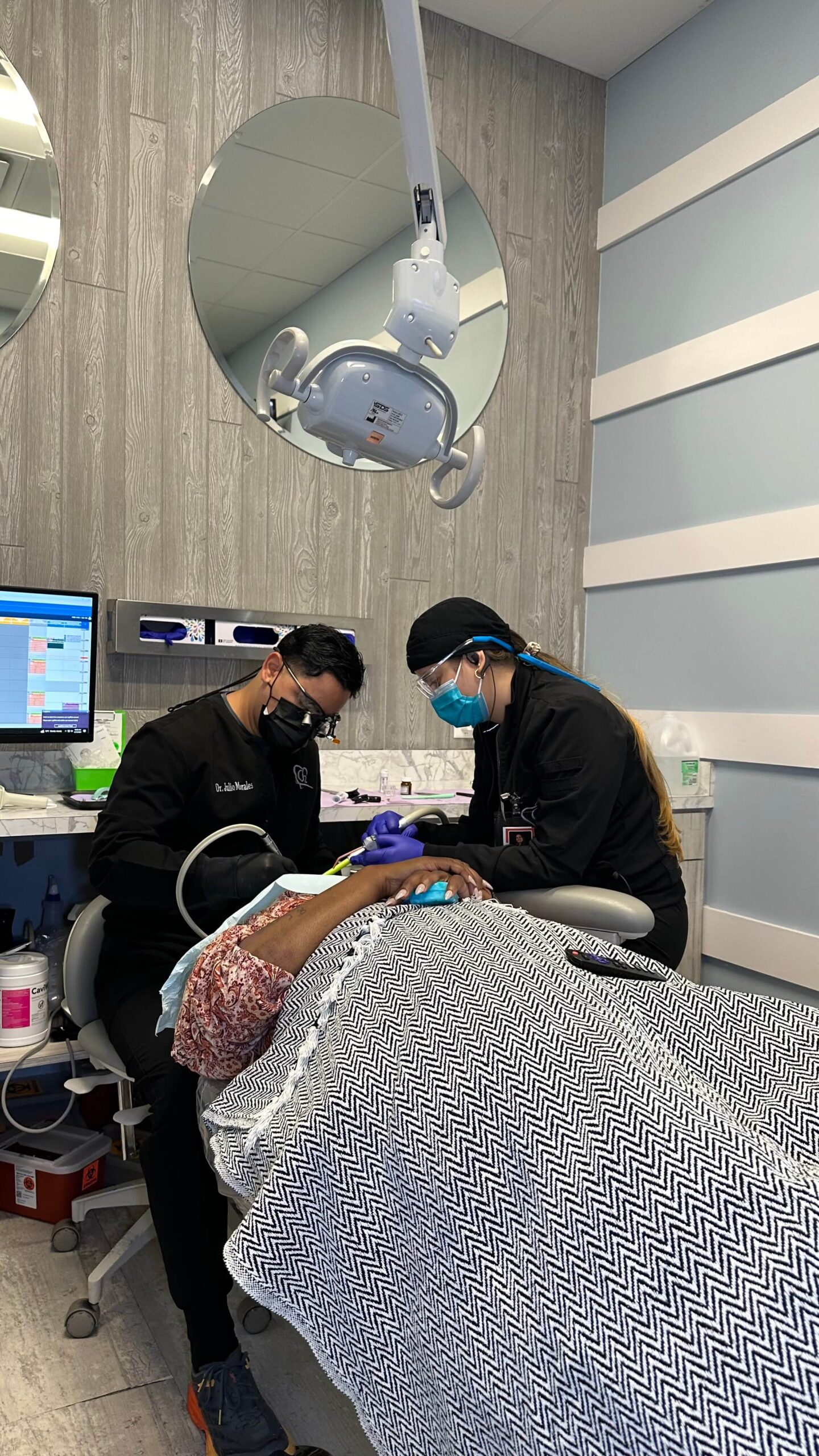
Key Objectives of Restorative Dentistry
- Restoring Normal Oral Functions: One of the primary goals of restorative dentistry is to help patients regain normal oral functions, such as biting, chewing, and speaking. By addressing and repairing damaged or missing teeth, it ensures that patients can perform everyday dental functions without experiencing pain or discomfort.
- Preventing Further Tooth Damage: Restorative dentistry procedures, such as fillings and crowns, play a crucial role in preventing further tooth damage. By filling cavities or covering exposed tooth surfaces, the risk of further decay or infections is significantly reduced.
- Enhancing Aesthetics: In addition to restoring functionality, restorative dentistry also contributes significantly to improving a patient’s physical appearance. A procedure like a dental implant does more than just replace a missing tooth – it can enhance a patient’s smile and boost their self-confidence.
- Promoting Oral and General Health: The condition of one’s oral health has a profound impact on their overall health. By promoting oral health, restorative dentistry indirectly contributes to the improvement of a patient’s general health, as untreated oral infections can often lead to more serious health complications.
- Preventing Progression of Dental Diseases: Restorative dentistry aims to identify and treat potential dental diseases in their early stages, thereby preventing the progressive deterioration of oral health.
Significance of Restorative Dentistry
- Enhancing Overall Health: Oral health is intrinsically linked to systemic health. Conditions like heart disease, diabetes, and respiratory disease can be traced back to poor oral health. Restorative dentistry addresses oral health issues at their core, thereby promoting overall well-being.
- Preventing Future Dental Complications: Ignoring dental issues can lead to more serious and expensive treatments down the line. Restorative dentistry provides timely intervention, halting the progression of dental disease and saving patients from future discomfort and financial burden.
- Restoring Functionality and Comfort: Impaired or lost teeth can hinder everyday activities like eating and speaking. Restorative dentistry offers solutions to these problems, enabling patients to regain normal oral functions without discomfort.
- Boosting Self-Confidence: A healthy, attractive smile can significantly elevate a person’s self-esteem. Restorative dentistry, by rectifying dental issues and improving the aesthetic appeal of teeth, can instill a renewed sense of confidence.
- Contributing to Longevity: A healthy mouth can indeed add years to your life. Studies have linked oral health issues to a shortened lifespan. Therefore, maintaining oral health through restorative dentistry could potentially extend your life expectancy
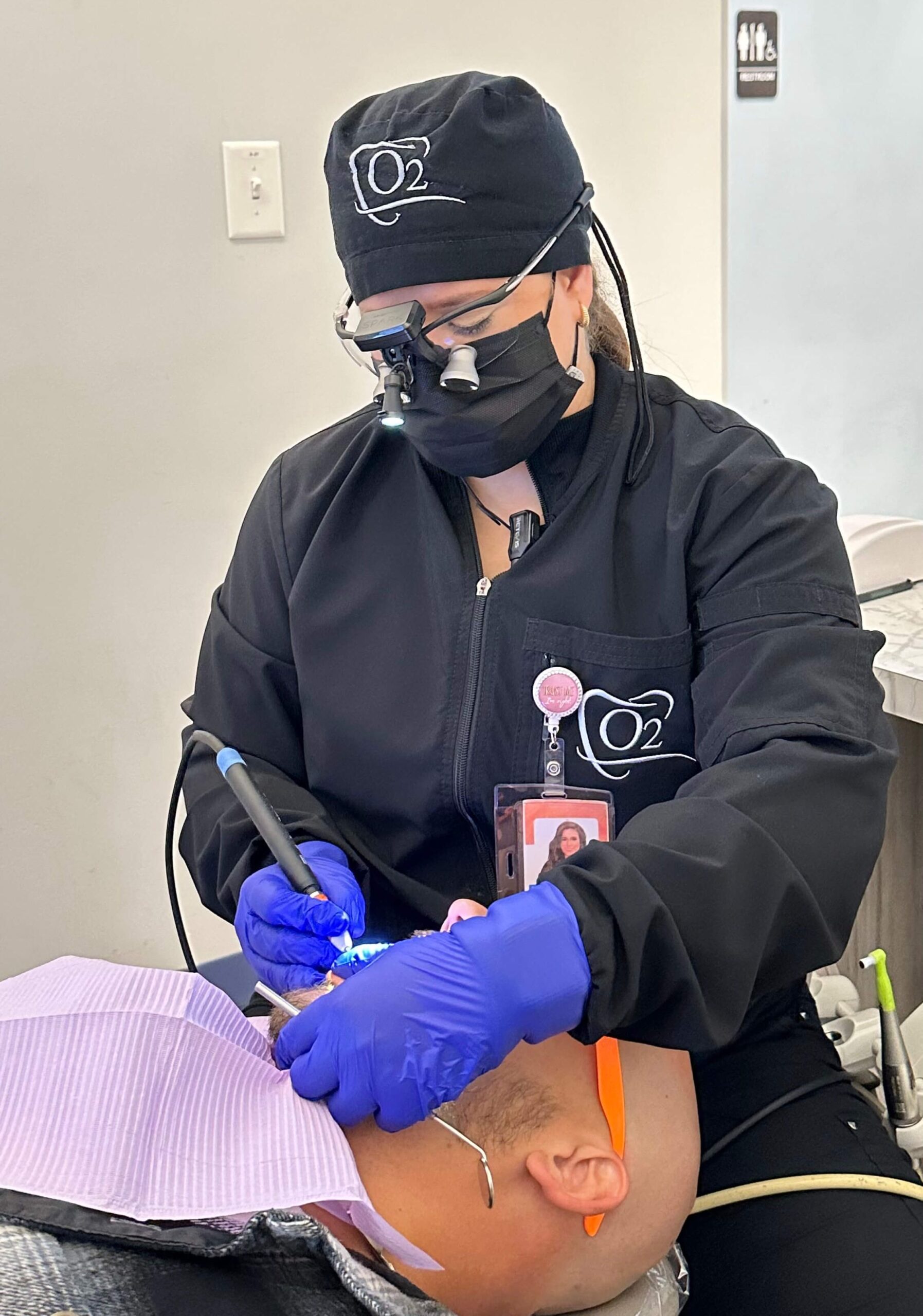
Common Restorative Dentistry Procedures
- Dental Fillings: This is a routine procedure employed to treat cavities or tooth decay. The decayed portion of the tooth is removed, and the cavity is filled with a suitable material. For instance, a composite resin filling is tooth-colored, making it a popular choice for front teeth.
- Dental Crowns and Bridges: Crowns are cap-like structures that cover damaged or decayed teeth, restoring their shape, size, and strength. Bridges, on the other hand, replace missing teeth by anchoring artificial teeth to the adjacent healthy ones. For example, a porcelain crown can be color-matched to your natural teeth, offering a seamless appearance.
- Dental Implants and Dentures: These are popular tooth replacement options. Dental implants involve inserting a titanium post into the jawbone, onto which a prosthetic tooth is attached. Dentures are removable appliances that can replace a few missing teeth (partial dentures) or a full set of teeth (complete dentures). For instance, implant-supported dentures provide a more stable and comfortable fit than traditional dentures.
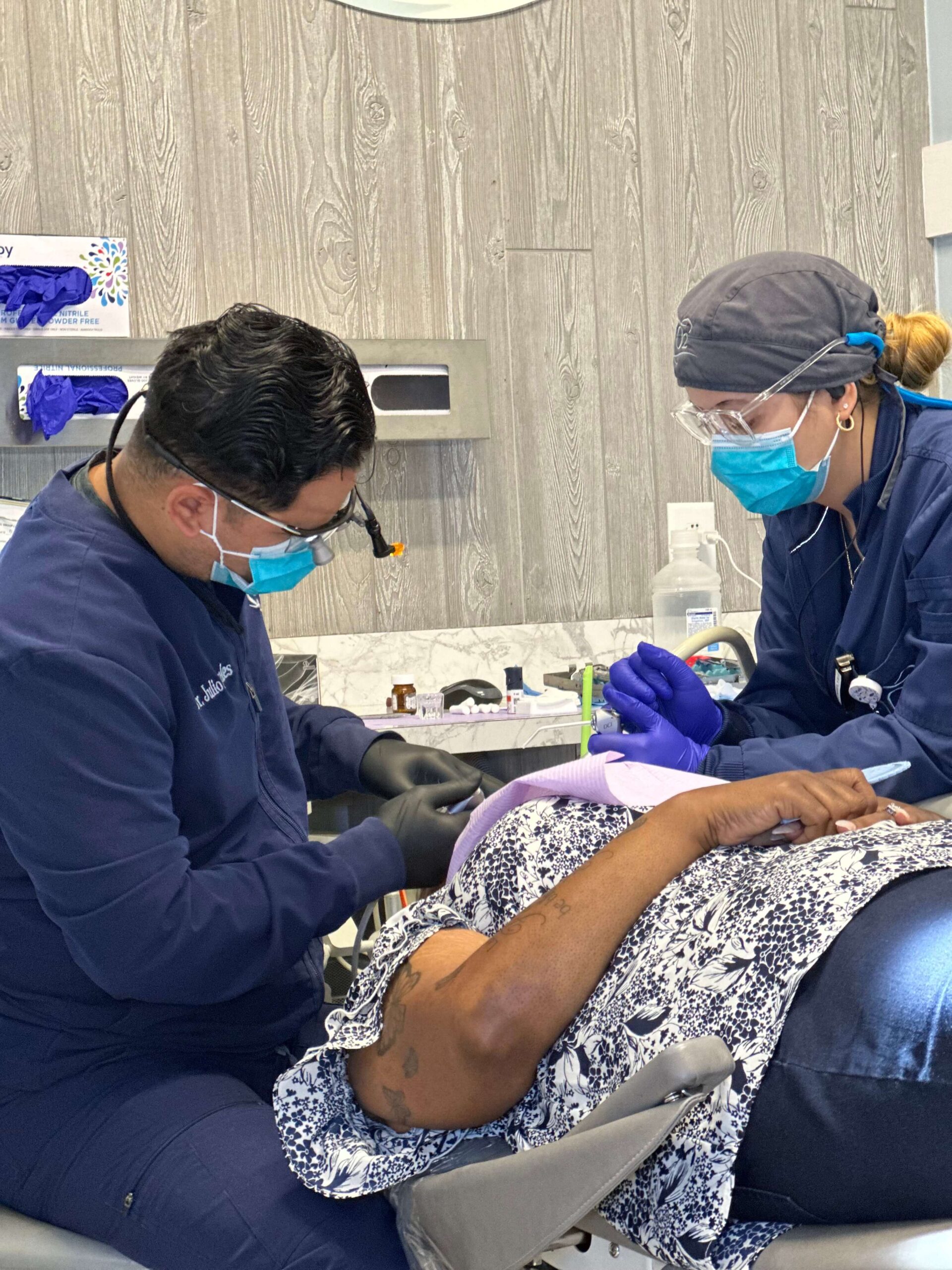
Dental Fillings
When it comes to restorative dentistry, dental fillings are a familiar and frequently utilized procedure. They serve a critical role in repairing teeth that have been compromised by decay or damage, restoring their strength and function. The process entails removing the decayed or damaged part of the tooth and filling the resulting cavity with a suitable material.
There’s a variety of materials available for dental fillings, such as amalgam (silver filling), composite resin, gold, and porcelain. The selection of the material is influenced by several factors including the patient’s specific needs, the severity of the decay, budget considerations, and the dentist’s professional advice.
To help you better understand, let’s walk through the dental filling procedure:
- Preparation: The procedure begins with the application of a local anesthetic to numb the area around the tooth that needs to be filled, ensuring a pain-free experience.
- Removal of Decay: Next, the dentist uses a drill, air abrasion instrument, or laser to remove the decayed part of the tooth. The choice of tool depends on the dentist’s judgment and the extent of decay.
- Tooth Inspection: Once the decay is removed, the dentist conducts a thorough inspection of the tooth to ensure no decay remains.
- Filling Placement: The cleaned cavity is then filled with the chosen filling material. The filling is layered to reinforce tooth structure and protect against potential damage from temperature changes in the mouth.
- Polishing: After the filling material is hardened with a special light, the dentist shapes and polishes the filled tooth to mimic the appearance and feel of a natural tooth.
It’s worth noting that dental fillings aren’t just for cavities. They can also be used to repair teeth that have been broken or worn down due to habits like grinding or nail-biting. Despite its simplicity, the dental filling procedure plays a significant role in maintaining oral health and preventing further dental complications. Regular dental check-ups can help detect tooth decay early, making the filling process more straightforward and effective.
Dental Crowns and Bridges
Dental crowns and bridges are another integral part of restorative dentistry, used to repair damaged teeth or replace missing ones, thereby improving the function and appearance of your smile.
A dental crown, often referred to as a cap, is designed to cover the entire visible part of a tooth. It serves to protect and strengthen a tooth structure that can’t be restored with fillings or other restorations. Dental crowns are typically recommended for teeth that are broken, cracked, severely worn down, decayed, weakened by large fillings, or to cover a dental implant or a tooth that has undergone root canal therapy. They can be made from various materials including porcelain, ceramic, resin, or metal alloys, each with its own set of advantages.
On the other hand, a dental bridge is essentially a series of crowns combined to replace one or more missing teeth. Bridges use the teeth on each side of the gap (known as abutment teeth) for support, which are themselves covered by crowns. A replacement tooth, or multiple teeth, are then suspended between these abutment teeth, effectively “bridging” the gap.
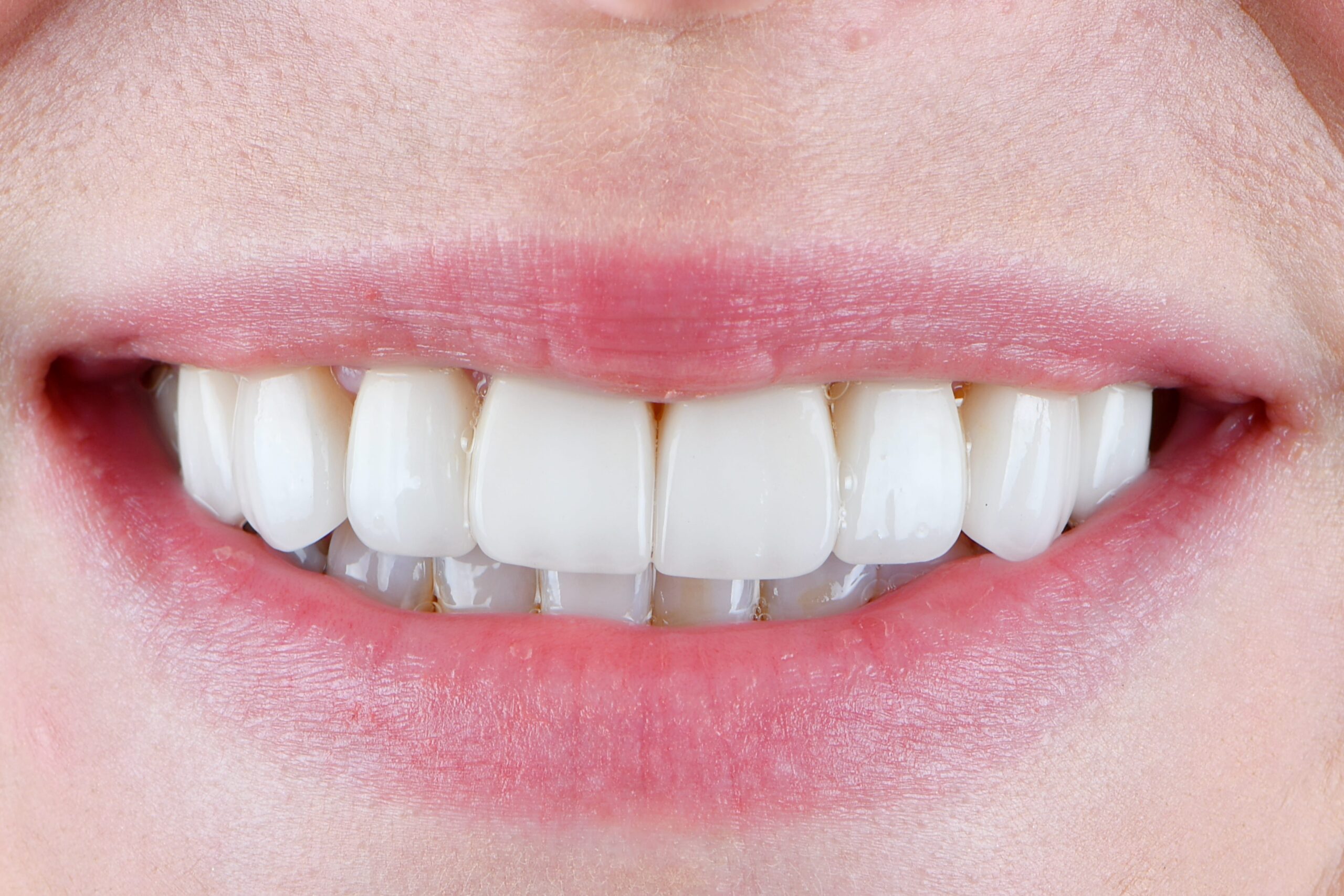
- Assessment and Preparation: Initially, the dentist will examine the affected tooth or teeth to determine the appropriate treatment plan. For a crown or bridge placement, the tooth is reshaped by removing a portion of enamel to accommodate the restoration.
- Impressions: Impressions of the prepared teeth are then taken, either physically or digitally, and sent to a dental lab where your custom crown or bridge will be crafted.
- Temporary Restoration: While waiting for the final restoration, which usually takes a couple of weeks, you will receive a temporary crown or bridge to protect the prepared teeth.
- Placement of Final Restoration: Once the custom-made crown or bridge is ready, your dentist will check and adjust the fit and bite as necessary before cementing it to the prepared teeth, completing the restoration.
- Post-Procedure Care: Even though crowns and bridges are durable, they still require regular brushing, flossing, and dental check-ups to maintain their functionality and longevity.
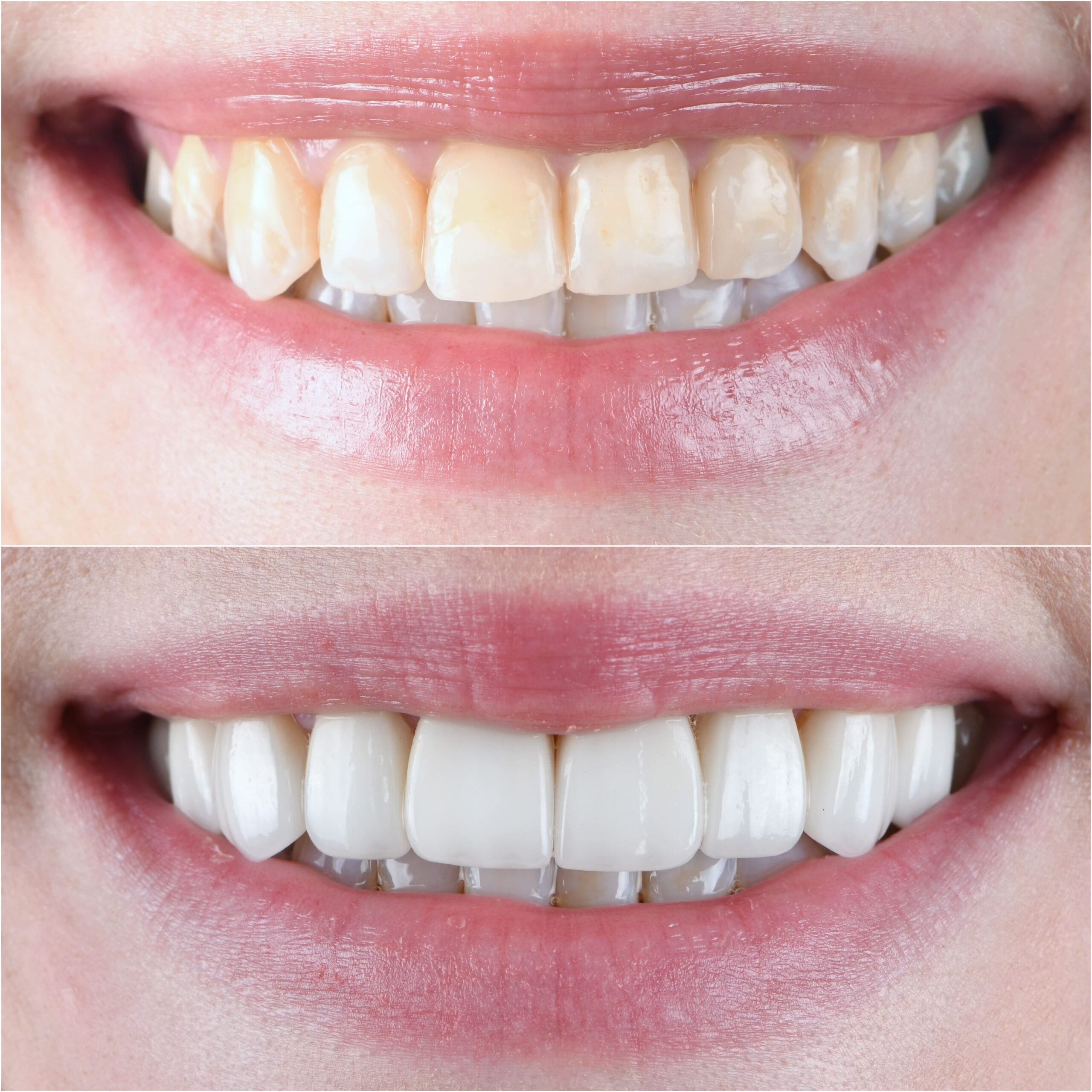
Dental Implants and Dentures
Tooth loss can be a challenging experience, but restorative dentistry offers effective solutions like dental implants and dentures. These procedures are designed to replace missing teeth, restoring both the aesthetic appeal and functionality of your smile.
Dental implants are essentially titanium posts surgically positioned into the jawbone beneath the gum line. They serve as a sturdy replacement for the root of a missing tooth. Once the jawbone has healed around the implant, a replacement tooth is affixed to it. Known for their durability and longevity, dental implants also contribute to maintaining jawbone health.
In contrast, dentures, or false teeth, are removable prosthetic devices created to replace missing teeth. They can be partial, replacing some teeth, or complete, replacing all teeth in a jaw. Dentures offer a non-surgical, cost-effective solution, particularly beneficial for patients who may not be suitable candidates for implants due to health or budget constraints.
- Dental Implants:
- Treatment Planning: This involves a comprehensive dental examination, including X-rays, impressions, and individualized treatment planning.
- Implant Placement: The dental implant is placed into the jawbone during a minor surgical procedure.
- Healing Process: Over a few months, the bone grows and heals around the implant, securing it in place.
- Abutment Placement: An abutment is attached to the implant once healing is complete. This will hold the new tooth.
- Artificial Tooth Placement: A crown, designed to match your natural teeth, is attached to the abutment.
- Dentures:
- Preparation: Impressions and measurements of the jaw are taken to create a model denture.
- Fitting Sessions: Several trial fittings may be required to ensure the denture has the right shape, color, and fit.
- Final Denture Fitting: The dentist makes final adjustments to the denture to ensure a comfortable and functional fit.
Benefits of Restorative Dentistry
Restorative dentistry is more than just a solution to fix teeth; it’s a comprehensive approach to managing oral health. It offers a myriad of benefits that extend beyond the physical aspects, improving both form and function of your teeth. This means restoring the natural look of your teeth and enhancing your ability to eat and speak properly.
Moreover, restorative dentistry also offers preventive measures to avert future dental damage. The procedures aim not only to enhance the aesthetic appeal of your smile but also boost your self-esteem by crafting a healthier, more radiant smile.
Restorative Dentistry and Oral Health
Restorative dentistry is a cornerstone in the preservation of oral health. Ignoring dental issues can escalate into severe complications affecting the entire mouth.
Take cavities, for example. When left untreated, they can expand, leading to extensive tooth decay and potential tooth loss. Dental fillings come into play here, restoring the tooth’s structure and functionality after decay removal. Similarly, dental crowns and bridges serve as safeguards against teeth shifting following tooth loss, a situation that could result in bite misalignment and jaw issues.
Consider also dental implants and dentures. While they replace lost teeth, they also play a role in preserving facial structure. They counteract the bone loss often associated with tooth loss, safeguarding the remaining teeth and maintaining the mouth and face’s shape and structure.
Restorative dentistry, therefore, is not just about fixing problems; it’s about prevention too. It’s about maintaining the health, functionality, and appearance of your teeth. Coupled with regular dental check-ups and good oral hygiene habits, restorative dentistry is a key player in maintaining optimal oral health. Remember, a healthy mouth is a vital component of a healthy body.
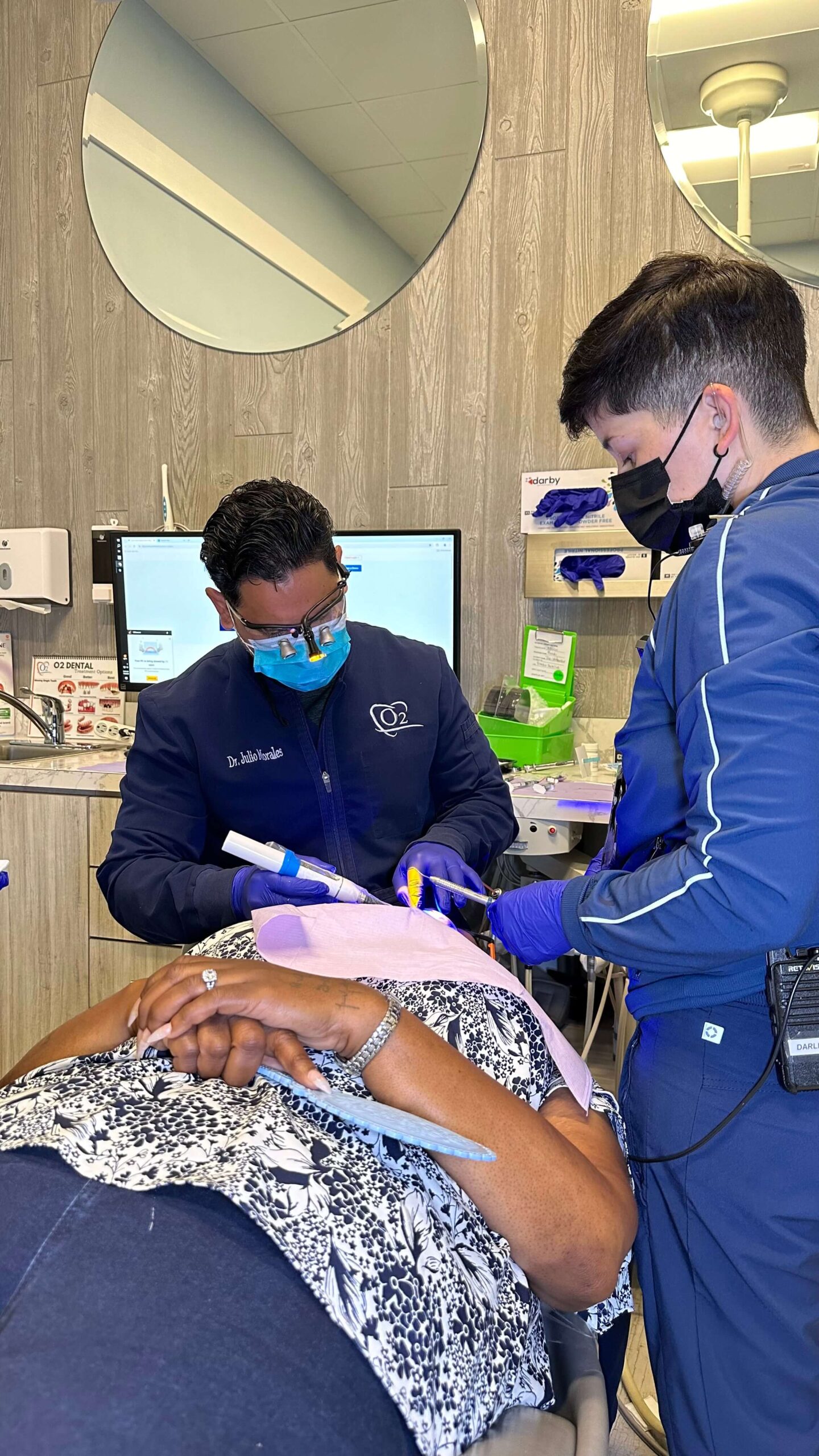
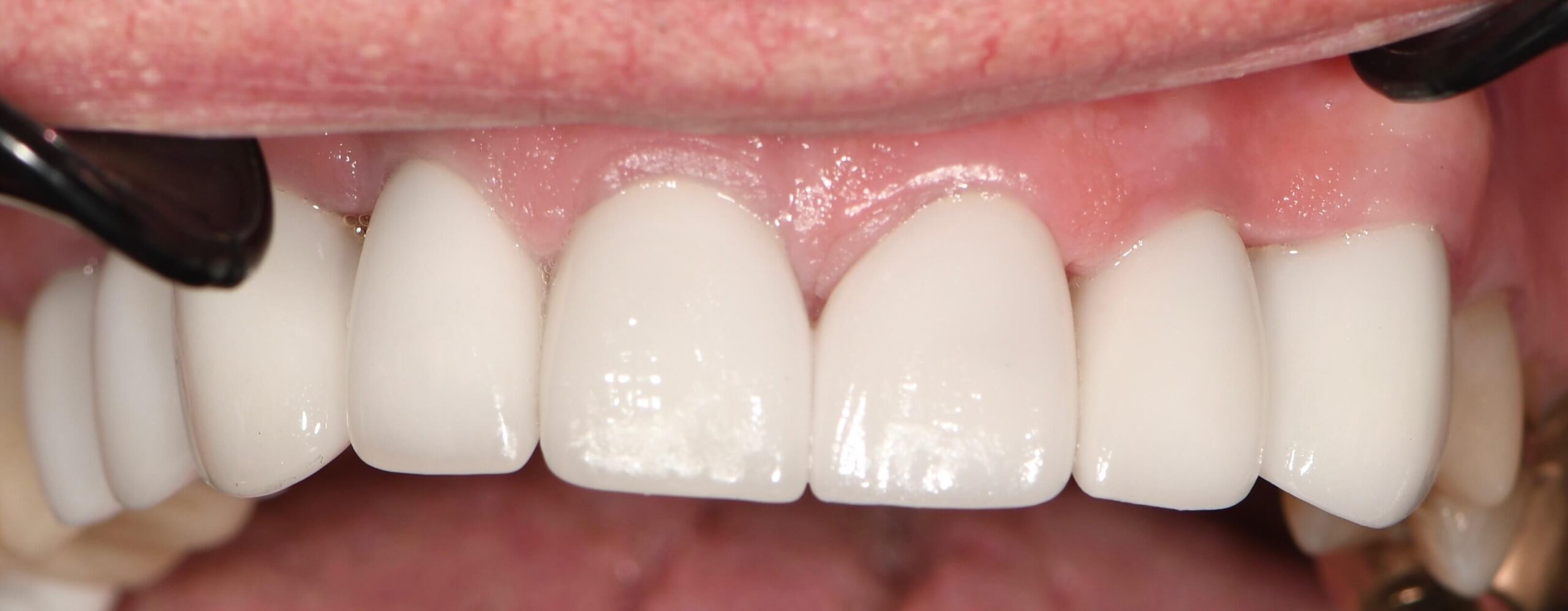

Enhanced Functionality and Confidence
Beyond the restoration of oral health, restorative dentistry offers the added advantage of improving oral functionality. Dental issues, when left untreated, can interfere with basic oral functions like eating, speaking, and smiling. For instance, missing teeth can complicate chewing and clear speech, while severe tooth decay can cause intense toothache.
Restorative dentistry, through procedures like dental implants, dentures, fillings, crowns, or bridges, fortifies your teeth, enhancing their functionality. These treatments do more than just repair or replace damaged or missing teeth; they also maintain proper bite alignment, ensuring optimal oral health and functioning.
But the benefits of restorative dentistry extend beyond physical health. It can also significantly boost an individual’s confidence and self-esteem. In a world where a smile can speak volumes about a person, having missing, decayed, or damaged teeth can impact one’s self-perception negatively. Restorative dentistry, by restoring your teeth to a state close to their natural one, can significantly enhance your smile and, consequently, your confidence.
It’s not just about aesthetics; it’s about feeling good too. A healthy, restored smile can give you a social and professional edge, encouraging you to smile more, speak with more confidence, and live life without worrying about your oral health. This confidence boost can also positively impact your mental health, underscoring the importance of restorative dentistry beyond physical health.
Selecting a Suitable Restorative Dentist
Importance of Dentist's Qualifications and Experience
The cornerstone of safe and effective dental treatment lies in the hands of a well-qualified and experienced restorative dentist. Such a professional has undergone rigorous training in various procedures and is proficient in diagnosing and addressing a spectrum of oral health concerns. They hold a license from a reputable dental authority and uphold the high professional standards of the field.
Experience, in tandem with qualifications, is a vital factor. A seasoned dentist, having honed their skills over years of practice, has dealt with a diverse range of cases, complications, and unique scenarios. This wealth of experience equips them with the foresight to anticipate and circumvent potential issues, and the expertise to deliver comfortable and effective treatment, even in complex cases.
When selecting a dentist, don’t hesitate to inquire about their educational background, certifications, and years of practice. Most dentists are open to sharing this information and may even provide visual evidence of their past work through before-and-after photos.
Remember, the ideal restorative dentist combines the necessary qualifications and experience with a professional, meticulous approach and a dedication to patient care. This blend of traits can significantly elevate the results and overall experience of your restorative dental treatment.
Significance of Modern Dental Technology
The realm of restorative dentistry has been revolutionized by the advent of modern dental technology. As such, it’s vital to ensure your chosen restorative dentist is well-versed in the latest technological advancements.
Cutting-edge diagnostic tools, including digital X-rays and 3D imaging, have transformed the way dentists diagnose and plan treatments. These technologies not only enhance accuracy but also allow you to visualize the expected results of restorative procedures, fostering a deeper understanding of the treatment process.
Beyond diagnostics, contemporary treatment technologies have significantly improved patient experiences. For instance, CAD/CAM technology allows for the creation of dental crowns and other restorations in a single visit, minimizing the need for multiple appointments. Laser dentistry, on the other hand, has made procedures less invasive and more comfortable, promoting faster recovery times.
Furthermore, digital record-keeping enhances the continuity of care by facilitating easy comparisons between past and present dental conditions and enabling more precise monitoring of treatment progress.
The integration of the latest dental technology into a practice is a testament to a dentist’s dedication to delivering top-tier care and staying abreast of industry advancements. When choosing a restorative dentist, it’s advisable to inquire about the technology they utilize. However, remember that while modern technology can augment the treatment experience, it should serve as a supplement to, not a substitute for, the dentist’s skills and expertise.
Role of Patient Reviews
Patient reviews serve as a crucial tool when selecting a restorative dentist. These firsthand accounts offer a window into the experiences of previous patients, shedding light on the dentist’s proficiency, communication style, quality of care, and even the clinic’s ambiance.
These reviews can provide a comprehensive picture of a patient’s journey, from the initial consultation and treatment process to follow-up care. They can reveal the dentist’s ability to articulate procedures, their bedside manner, and their approach to patient comfort and pain management.
Furthermore, reviews can offer insights into the experiences of patients who have undergone the same restorative procedure you’re considering. Their feedback can illuminate the process, recovery, final outcome, and even the cost of the procedure.
However, while patient reviews are a valuable source of information, they should be considered as one piece of the decision-making puzzle. As individual experiences and perceptions vary, interpretations of reviews can be subjective. It’s crucial to weigh the dentist’s qualifications, experience, and technology used, alongside patient reviews.
Ultimately, your comfort and trust in your dentist are paramount for a positive restorative dentistry experience. An informed decision can guide you towards a successful restoration treatment, restoring your smile and bolstering your oral health.
Schedule Today!
We look forward to meeting you. Call us or request an appointment online to set up your first visit. We’ll be in touch soon.

